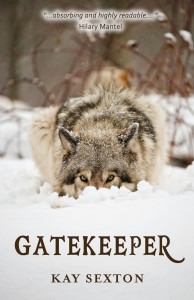The art of writing and Makerism

 A couple of weeks ago I sold something to somebody and then, a few days later, I saw her wearing it and she told me how much she liked it. Then she asked me why she had never seen me wearing anything I’d made.
A couple of weeks ago I sold something to somebody and then, a few days later, I saw her wearing it and she told me how much she liked it. Then she asked me why she had never seen me wearing anything I’d made.
It’s a bigger question than it sounds because I think it relates as much to writing as to any other kind of creation.
I grew up in hotels, working for chefs. One thing I learned, chef after chef after chef, was that any man who cooks for a living will tell you that he prefers his wife’s cooking to his own. Now that sounds daft, but it’s a generally agreed rule and it’s nothing to do with the relative merits of the cooking in each case but simply because if you cook for a living you spend all day tasting small amounts of rich and complex foodstuffs to ensure that they are just right. As a result, there’s something utterly wonderful about simple food cooked by somebody else.
When you’re a writer, you have to spend a lot of time writing – necessarily so. It’s like spending all day in the kitchen – hot, sweaty, breathing in air that is redolent with every flavour, fragrance and tang of the food being cooked. It leaves you steeped in all that context … soused in your own words like a side of beef steeped in Guinness.
In addition to writing, a writer needs to read. And like most chefs, writers often like to read something that strikes them as fresh and flavoursome. That usually means work that is completely different in genre or style to their own. But writers also need to read work like their own, to hone their skills and test their own capacities, so an effective writer’s reading list (in my opinion) will stretch from the outer reaches of the unfamiliar to the very close shoreline of their own field.
And one of the things that happens when you read like that is you lose all savour for your own words. Like a chef’s signature dish, they are clearly intended to be palatable and distinctive but to that chef, they hold about as much interest as a cardboard sandwich.
And Makerism, that sub-craft of the writer which involves banging plot elements together until they stand up, or hacking away at dialogue until it appears fresh and natural, is the part of writing, like many other crafts, that renders the product unpalatable to the crafter.
So the simple answer to the original question is that when I’ve finally finished making something I have little interest in wearing it because my interest was exhausted during the production phase. But the more complicated answer is about how one – whether a knitter or a sculptor or a writer – keeps alive the desire to create when the act of creation dulls enthusiasm for the creation itself.
As a chef I worked under used to say, ‘Bread and butter and a cup of tea, that’s the best food for a chef’. Reading good fiction is the best food for a novelist. But reading in the outer reaches is good too …


Recent Comments